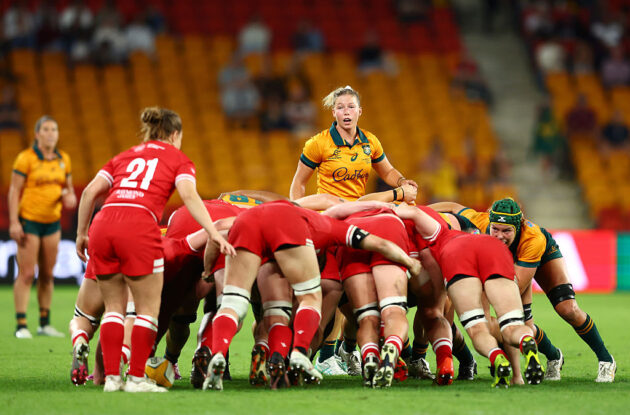Scrums are a set piece in rugby union
Scrums are a vital part of the game and they can take place many times across a rugby match.
Some fans may be wondering why they occur and in what instances they occur, here we explain why scrums happen in rugby union.
Read more: What is a maul?
World Rugby defines a scrum as “a means of restarting play after a stoppage which has been caused by a minor infringement of the Laws or the ball becoming unplayable in a ruck or maul”.
There are many reasons a scrum is given by a referee in a match. One of the most frequent is for a knock-on or forward pass. They can also be awarded if the ball is trapped in a ruck or a maul and sometimes teams, who think they have got the better of opponents at scrum-time, can elect to take a scrum instead of a penalty.
The advantage of selecting a scrum if you have the upper hand is if a team give away multiple scrum penalties a player will be shown a yellow card. The player would then spend ten minutes off the pitch in the sin bin.
A scrum used to be awarded if an attempted try was held up over the line. However, this rule was changed to instead award a goal line drop-out.

Dickson oversees a scrum during the Wales-South Africa match(Getty Images)
Why do scrums happen: What is the set piece?
In rugby union eight players from each team form a scrum. There is a front three, a second row of four and the No 8 at the back. The ball is inputted in the tunnel between both sets of players by the scrum-half of the team who have been awarded the set piece.
Once the ball is put in a team can keep it there and try to drive a team backwards, or they can bring the ball back to the No 8 where it can be played to the team’s other players.





